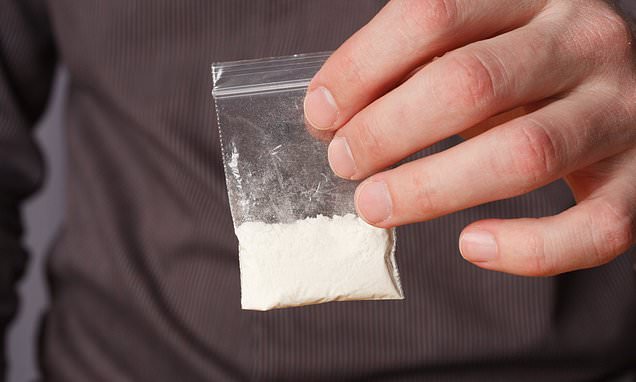Uncategorized
A Deep Dive into Ketamine Crystals: Cooking, Uses, and Benefits
Introduction
Ketamine has transitioned from a specialized anesthetic used primarily in veterinary medicine to a compound with diverse applications in human medicine, mental health treatment, and recreational use. One of the most intriguing aspects of ketamine is its crystalline form, which plays a pivotal role in its preparation and use. This blog post will provide an in-depth exploration of how to cook ketamine crystals, the various uses of ketamine, and the significance of ketamine crystals.
Understanding Ketamine and Its Forms
Ketamine, a dissociative anesthetic, works by blocking NMDA receptors in the brain, which leads to its anesthetic and dissociative effects. In its purest form, ketamine can exist as crystals, which are often used in medical and research settings due to their high purity and stability.

Ketamine Crystals
Ketamine crystals, typically ketamine hydrochloride, are the purest form of the substance. These crystals are obtained through a series of chemical reactions and purification processes. The crystalline form is preferred in medical settings because it ensures consistent dosages and purity.
How to Cook Ketamine Crystals
Cooking ketamine crystals is a process primarily carried out for illicit purposes, converting the crystalline form into a more easily ingestible form, such as powder. It is important to note that this section is purely informational and not an endorsement of illegal activities. The process involves several steps, each requiring precision and care to ensure the integrity of the final product.
Step 1: Gather Materials
Before beginning the process, gather the necessary materials:
- Ketamine crystals
- Distilled water
- A glass container
- A heat source (e.g., a hot plate)
- A fine mesh filter
- A flat surface for drying
Step 2: Dissolve the Crystals
Start by dissolving the ketamine crystals in distilled water. The amount of water used should be sufficient to completely dissolve the crystals. Stir the solution thoroughly to ensure all the crystals are dissolved.
Step 3: Heat the Solution
Once the crystals are dissolved, gently heat the solution using a hot plate. The goal is to evaporate the water, leaving behind a ketamine residue. It is crucial to maintain a consistent temperature to avoid decomposing the ketamine. This step should be done in a well-ventilated area to avoid inhaling any fumes.
Step 4: Filter the Solution
After most of the water has evaporated, filter the solution to remove any impurities. Use a fine mesh filter to ensure a clear solution. The remaining liquid should be pure ketamine.
Step 5: Evaporate the Remaining Water
Continue heating the filtered solution to evaporate any remaining water. As the water evaporates, ketamine crystals will begin to form. This process may take some time, so patience is essential.
Step 6: Dry the Crystals
Once the crystals have formed, carefully collect them and place them on a flat surface to dry. Ensure the drying area is clean and free of contaminants. The drying process can take several hours to days, depending on the humidity and temperature of the environment.
Step 7: Store the Crystals
After the crystals are completely dry, store them in an airtight container to maintain their purity and potency. Proper storage is crucial to prevent degradation and contamination.
Ketamine Uses
Ketamine’s uses are diverse, ranging from medical applications to mental health treatments and recreational use. Understanding these uses is essential for appreciating the full spectrum of ketamine’s potential.

Medical Uses
- Anesthesia: Ketamine is widely used as an anesthetic in both human and veterinary medicine. It induces a trance-like state, providing pain relief, sedation, and amnesia.
- Emergency Medicine: Ketamine is valuable in emergency medicine for its rapid onset of action and safety profile. It is used for procedures requiring quick and effective anesthesia.
- Chronic Pain Management: Ketamine is used to manage chronic pain conditions, especially when other treatments have failed. It works by blocking NMDA receptors, which play a role in pain transmission.
Mental Health Treatment
- Depression: Ketamine has emerged as a promising treatment for depression, particularly treatment-resistant depression. Unlike traditional antidepressants, which can take weeks to show effects, ketamine can produce rapid antidepressant effects within hours.
- PTSD: Studies have shown that ketamine can help reduce symptoms of post-traumatic stress disorder (PTSD). Its dissociative effects can facilitate the processing of traumatic memories in a safe and controlled environment.
- Anxiety: Ketamine has been used to treat severe anxiety disorders. Its calming effects can help reduce anxiety symptoms and improve overall quality of life.
Recreational Use
Ketamine is also used recreationally for its dissociative and hallucinogenic effects. Users seek the intense, out-of-body experiences that ketamine can induce, often referred to as entering the “K-hole.” While recreational use carries risks, it highlights the profound impact ketamine can have on perception and consciousness.
The Science Behind Ketamine’s Effects
Ketamine’s effects are the result of its action on the brain’s NMDA receptors. By blocking these receptors, ketamine disrupts normal brain function, leading to its anesthetic, dissociative, and hallucinogenic effects.
Psychological Effects
- Dissociation: One of the primary effects of ketamine is dissociation, where users feel detached from their body and surroundings. This can range from mild detachment to intense, out-of-body experiences.
- Hallucinations: Ketamine can induce vivid visual and auditory hallucinations. These hallucinations can be pleasant or disturbing, depending on the user’s mindset and environment.
- Euphoria: Many users report feelings of euphoria and well-being while under the influence of ketamine.
- Cognitive Impairment: Ketamine can impair cognitive functions, making it difficult to think clearly or perform tasks that require concentration.
Physical Effects
- Anesthesia: At higher doses, ketamine acts as a powerful anesthetic, rendering the user immobile and insensate.
- Pain Relief: Ketamine is an effective pain reliever, particularly for chronic pain conditions.
- Nausea and Vomiting: Some users experience nausea and vomiting, especially at higher doses.
- Increased Heart Rate and Blood Pressure: Ketamine can cause a temporary increase in heart rate and blood pressure.
Risks and Considerations
While ketamine has many beneficial uses, it is not without risks. It is essential to be aware of the potential dangers associated with its use.
Addiction and Abuse
Ketamine has the potential for abuse and addiction. Regular use can lead to psychological dependence, and some individuals may develop a tolerance, requiring higher doses to achieve the same effects.
Cognitive Effects
Long-term use of ketamine can lead to cognitive impairments, including memory loss and difficulties with learning and concentration.
Physical Health Risks
Chronic use of ketamine can lead to various physical health issues, including bladder problems, liver damage, and cardiovascular issues.
Legal Considerations
In many countries, ketamine is a controlled substance, and its use is regulated. It is essential to be aware of the legal status of ketamine in your region before attempting to obtain or use it.
The Therapeutic Potential of Ketamine
Despite the risks, ketamine’s therapeutic potential cannot be ignored. Its ability to produce rapid antidepressant effects and provide pain relief in otherwise intractable conditions highlights its importance in modern medicine.
Depression Treatment
Ketamine’s rapid onset of antidepressant effects is particularly valuable for individuals experiencing severe depressive episodes. Traditional antidepressants can take weeks to become effective, while ketamine can alleviate symptoms within hours. This makes it a critical tool in preventing suicide and managing acute depressive episodes.
Pain Management
For individuals suffering from chronic pain, ketamine offers an alternative when other treatments have failed. Its unique mechanism of action can provide relief for conditions that are otherwise difficult to manage, improving quality of life for many patients.
PTSD and Anxiety
The ability of ketamine to reduce symptoms of PTSD and severe anxiety disorders provides hope for individuals who have not found relief through traditional therapies. Its effects on memory and perception can facilitate the processing of traumatic experiences, leading to lasting improvements in mental health.
Conclusion
Ketamine is a multifaceted substance with a wide range of applications and effects. From its crystalline form used in medical settings to its diverse uses in mental health treatment and recreational contexts, ketamine’s impact is profound. Understanding how to cook ketamine crystals, the various uses of ketamine, and the significance of ketamine crystals is essential for anyone interested in its potential.
Final Thoughts
Ketamine’s journey from a specialized anesthetic to a promising treatment for depression, chronic pain, and mental health disorders highlights its versatility and potential. However, it is essential to approach ketamine with caution and respect its potential risks. By doing so, we can harness its full potential while minimizing the dangers associated with its use. Always ensure that you are using ketamine responsibly and within the bounds of the law, and consult with a medical professional if you have any concerns about its use.

This comprehensive guide provides a detailed overview of ketamine, from its crystalline form and preparation to its diverse uses and therapeutic potential. By understanding the complexities of ketamine, you can make informed decisions about its use, whether for medical, therapeutic, or recreational purposes.
